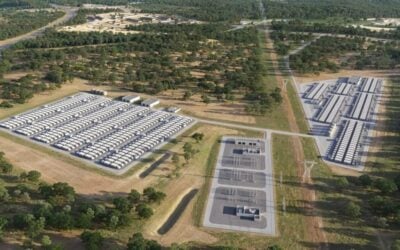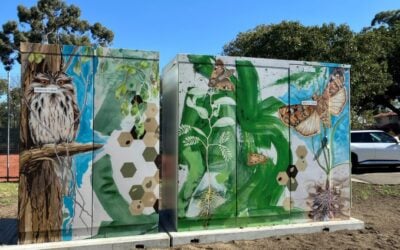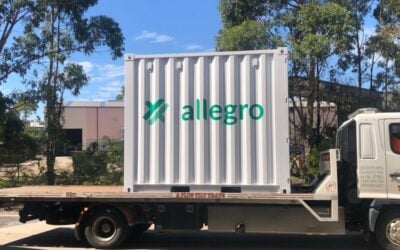
UK-headquartered developer Elements Green has received grid connection approval from Powerlink Queensland and the Australian Energy Market Operator (AEMO) for a 1.3GWh solar-plus-storage site in Queensland, Australia.
The developer announced it has received its 5.3.4.A letter from the state-owned network operator and AEMO for its Eurimbula Hybrid Facility.
Enjoy 12 months of exclusive analysis
- Regular insight and analysis of the industry’s biggest developments
- In-depth interviews with the industry’s leading figures
- Annual digital subscription to the PV Tech Power journal
- Discounts on Solar Media’s portfolio of events, in-person and virtual
Elements Green claims this is Australia’s largest solar and battery energy storage project to have received Generator Performance Standard (GPS) approval. It will couple 696MWp of solar PV generation with a 666MW/1,332MWh battery energy storage system (BESS).
The hybrid facility will be located within the proposed Central Queensland renewable energy zone (REZ), approximately 50km southeast of Gladstone. Queensland is set to pursue the development of 12 REZ across the state to support the deployment of 22GW of renewables by 2035.
However, with the recent election of the right-wing Liberal National Party (LNP) of Queensland, and several shifts in energy policy, leading to the cancellation of the 120GWh Pioneer-Burdekin pumped hydro project, question marks will be raised as to whether these will all be pursued.
For Elements Green, the receipt of the 5.3.4.A letter marks a vote of confidence in what will be the developer’s first solar-plus-storage project in Australia, with hopes to break ground on the site later this year.
Indeed, the letter grants the approval of performance standards and the System Strength Impact Assessment, as outlined in Clause 5.3.4A of AEMO’s National Electricity Rules.
Toby Roberts, country director of Elements Green Australia, said the project will benefit from “abundant sunshine, a stable grid, and strong regulatory support.”
According to documents submitted to Australia’s Environment Protection and Biodiversity Conservation (EPBC) Act, the hybrid facility will be spread across a 1,280-hectare area. The proposal includes the development of an onsite substation and will connect to the National Electricity Market (NEM) via existing 275kV transmission lines.
Development approval for the site was granted by the Gladstone Regional Council in 2018.
Elements Green is the second company to receive a 5.3.4.A letter for a solar-plus-storage site in recent weeks. Indeed, Energy-Storage.news reported on Friday (16 May) that developer Elgin Energy received grid connection approval for its 150MW Elaine solar-plus-storage project, situated in the Central Highlands region of Victoria.
Australia’s rigorous grid codes
Australia has one of the most rigorous grid code certification processes, which is part of AEMO’s GPS approval process, as noted by Energy-Storage.news in recent months.
Tom Best, the COO of Eku Energy, a company that develops, owns, and operates BESS, recently told ESN Premium that the procedure for developers in Australia to connect to the transmission grid and tap into the NEM Frequency Control Ancillary Services (FCAS) and energy trading markets is extremely stringent.
He also noted that it represents one of the longest and costly grid compliance processes among all the markets in which Eku Energy operates.
AEMO’s technicians subject plants to a wide variety of scenarios and ultimately push the plant or its model to the breaking point, which, as Best noted, necessitates project designers conducting numerous studies.
Once this is completed, the process is documented in a Grid Protection Scheme (GPS), which must then receive approval from both the Network Service Provider (NSP) and AEMO before the market operator issues the 5.3.4A letter of compliance.
However, the process does not end with the receipt of the 5.3.4A letter. Since the GPS is formulated based on modelling, any alterations made during the construction phase, such as modifications in plant design or cabling setups that might impact its electrical characteristics, must be updated through a procedure known as R1.
While a project can be awarded a GPS, the R1 process demonstrates that the project meets or surpasses its performance standards as required by AEMO and the network service providers. If these standards are not met, the GPS can be retracted.






